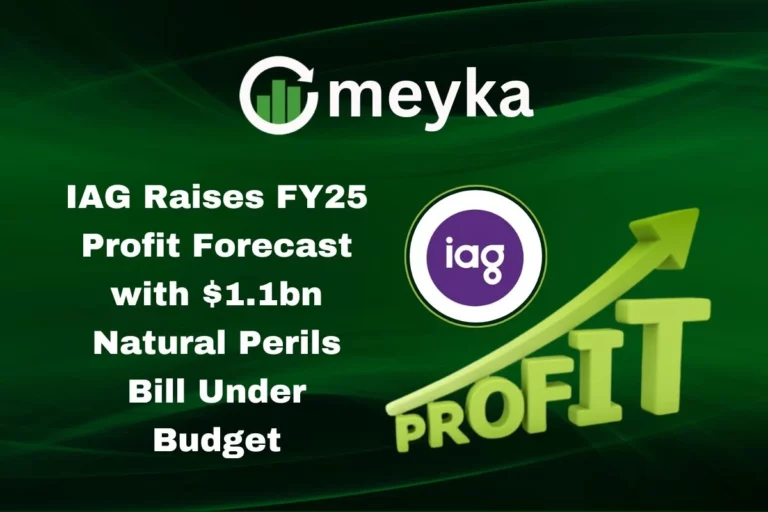Cboe Gains Approval to List Companies in Australia, Challenging ASX
In a landmark move that could reshape the Australian capital markets, the Australian Securities and Investments Commission (ASIC) has granted Cboe Global Markets the authority to function as a listing venue in Australia. This development allows Cboe to host initial public offerings (IPOs) and bring new companies, both local and international, onto its platform.
Historically, Cboe Australia (formerly Chi-X Australia) has served as an alternative trading venue, executing trades of ASX-listed securities, but lacked the authority to list new companies.
This move fundamentally challenges the ASX’s stronghold over primary listings and marks a new era of competition in Australia’s financial market.
Why This Change Matters for the Australian Market
Breaking the ASX Monopoly
For decades, the Australian Securities Exchange (ASX) has held near-monopolistic control over primary listings within Australia. Companies seeking capital via IPOs typically had no alternative. With Cboe now empowered to list companies, the dynamic shifts dramatically.
The approval signals that Australia is ready to embrace competitive exchange infrastructure, analogous to markets like the U.S. or the U.K., where multiple exchanges vie for listings and liquidity.
Increased Choice for Companies and Investors
Under the new framework, firms will have the option to list on Cboe rather than being forced to adopt the ASX route. This offers:
- Potentially lower listing fees and more flexible services
- Access to global capital markets via Cboe’s international network.
- Opportunities for dual listings or foreign companies to establish presence in Australia more smoothly.
- More diversity in capital-raising platforms and listing regimes, particularly for technology, growth, and innovation firms
For investors, the shift could mean more investment options, reduced costs, and improved transparency.
Market Infrastructure and Volume Strength
Cboe Australia already commands about 20% of Australia’s equity market trading volume, amounting to nearly A$2 billion in daily turnover. Its trading engine, global network, and technology backbone were built to scale.
This means transitioning into full listing capability does not require building from scratch, the infrastructure and market presence are already there.
How Cboe’s Listing Regime Will Work
Proposed Listing Requirements
Cboe has been developing a consultation framework that outlines eligibility criteria and ongoing obligations. Key features include:
- Multiple pathways to qualify (e.g., equity standard, net income standard, assets & revenue standard) rather than a one-size threshold.
- Spread requirement: at least 150 unaffiliated security holders with minimum parcel size, ensuring distribution.
- Investor relations budget requirements, especially in first year post-listing.
- Ongoing disclosure, governance, capital change rules, aligned with ASIC expectations.
- Recognition of acceptable foreign exchanges for dual listing purposes.
Cboe’s operating rules in Australia are codified and publicly available, ensuring regulatory clarity for participants.
Integration with Clearing and Settlement
Even though Cboe can host listings, clearing and settlement for trades will continue through CHESS, the existing ASX settlement platform, for many instruments.
This ensures continuity and interoperability across Australia’s exchange infrastructure.
Implications for the ASX and Broader Market Landscape
Pressure on ASX to Innovate
ASX has faced regulatory scrutiny in recent years, including technology failures, a problematic upgrade of its CHESS clearing system, and lapses in governance. The entry of a strong competitor like Cboe will likely force the ASX to accelerate innovation, reduce fees, and improve services to retain issuers and investors.
Stimulating IPO and Listing Activity
Australia’s IPO pipeline has been relatively weak in recent years. The availability of a competitive listing venue may work as a catalyst to revive public listings, particularly for growth and tech firms that have struggled with traditional listing thresholds.
Impacts on AI Stocks and the Innovation Economy
In a broader context, AI stocks, fintechs, and innovative technology firms often find it difficult to meet strict profit or equity requirements for traditional exchanges. The more flexible listing paths proposed by Cboe could make it easier for such companies to list in Australia or pursue dual listings, enhancing stock research coverage, liquidity, and investor interest in high-growth sectors.
Challenges and Risks Ahead
- Market acceptance: Some issuers may prefer to stay with the established ASX brand initially.
- Liquidity for newly listed names: Building depth in newly listed firms will require market confidence and investor support.
- Regulatory oversight: Cboe must comply rigorously with ASIC’s standards to gain trust from investors.
- Conflict with ASX: The ASX may push back or adjust its own rules, making the competitive dynamic fluid.
Conclusion
Cboe’s newly granted permission to list companies in Australia is a watershed moment. It breaks ASX’s historical stranglehold on IPOs and listing services, introduces real competition, and offers greater options for companies and investors alike.
By leveraging its existing infrastructure and global connections, Cboe is poised to become a serious contender in Australia’s financial markets. For sectors like AI, tech, and growth firms, this expansion offers renewed pathways to public markets.
FAQs
We use Cboe 3–4 times naturally as the target keyword in accordance with SEO best practices.
It’s possible. Firms seeking lower fees or more flexible governance could migrate, especially if liquidity and investor access are strong. But much depends on market acceptance and trading volume.
The more flexible listing paths and reduced barriers may attract AI stocks, fintechs, and other innovation firms that struggle under traditional profitability or equity thresholds.
Disclaimer:
This content is made for learning only. It is not meant to give financial advice. Always check the facts yourself. Financial decisions need detailed research.






